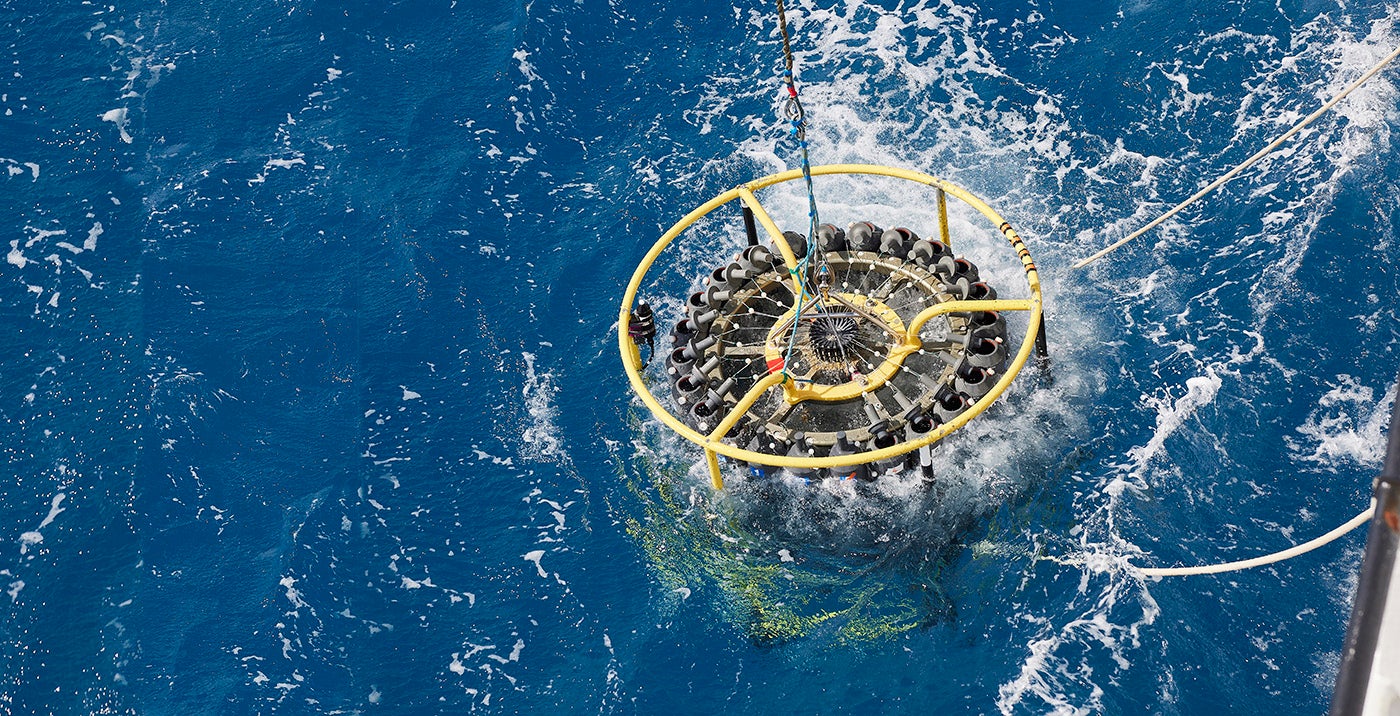For aspiring oceanographers, experience aboard a working research vessel offers a foundation in the more practical aspects of conducting science at sea. The Sea Experience in Shipboard Oceanography (SESO) program at ASU BIOS (Arizona State University-Bermuda Institute of Ocean Sciences) on the island of Bermuda allows graduate students and early career scientists who are actively engaged in ocean sciences to fully participate in a 5-day Bermuda Atlantic Time-series Study (BATS) research cruise aboard the R/V Atlantic Explorer, providing unparalleled insight into the logistics required to plan and execute a research cruise. Enquiries from applicants with limited access to oceanographic research cruises are particularly encouraged.

Sea Experience in Shipboard Oceanography
Long-term observations of ocean physics, biology, and chemistry across decades provide a powerful lens for understanding the present and future response of the oceans to environmental change. The focus of the BATS program is to continue to improve our understanding of the "time-varying" components of the ocean carbon cycle, related biogenic elements of interest (e.g., nitrogen, phosphorus, silica), and identifying the relevant physical, chemical, and ecosystem properties responsible for this variability. Initiated in October 1988, the BATS data record now spans 37 years, with over 400 cruises (typical frequency is monthly), and can readily be examined for direct responses to natural modes of climate variability that oscillate with a 5-10 year frequency (e.g., North Atlantic Oscillation, or NAO, and Atlantic Meridional Overturning Circulation, or AMOC).
Further, at 40 years of observations (and combined with nearly 70 years of observations in the Sargasso Sea), we are at the threshold of understanding sustained and long-term impacts of climate change on the ocean ecosystem, though many important questions relating to biogeochemical paradigms still remain. For example: Will ocean biogeochemistry and ecosystem functioning continue to change in response to acceleration of ocean warming, salinification, stratification, deoxygenation and acidification? Why is there a discrepancy between biological and geochemical estimates of carbon export production? What supports the seasonal drawdown of carbon dioxide in the absence of detectable nutrients? What are the sources of the elevated nitrate to phosphate ratio in the seasonal thermocline?
The BATS program has strong and diverse broader impacts, contributing to the field of ocean sciences by providing high quality ocean observations, and a framework in which other researchers can conceive and test hypotheses. As such, BATS continues to play an important role in providing scientists and students around the world with oceanographic data for both regional and global studies.
Sea Experience in Shipboard Oceanography
The Sea Experience in Shipboard Oceanography internship will last 9 days, allowing for arrival in Bermuda, 2 days of onshore pre-cruise orientation and familiarization, participation in a 5-day BATS cruise, and up to 2 additional days of post-cruise activities. The BATS program can accommodate 2 participants per cruise, and 6 cruises are available each year for participation. Applicants should be aware that, in the (unlikely) event that an NSF-funded scientist provides short notice of the need to join a BATS cruise, the participant may be bumped to the next available cruise.
How to Apply
- Applicants must be post-graduate students or early-career scientists engaged in oceanographic sciences.
- Contact the Director of Education for University Programs, Dr. Andrew Peters (apeter95@bios.asu.edu), to determine eligibility and cruise availability.
- Applications should be submitted at least 4 months prior to the potential cruise date and consist of:
- A copy of your resumé
- A letter of application (2 pages maximum including budget – see below), clearly stating previous experience, motivation, and career goals
- A letter of reference from the applicant’s supervisor, to be sent via email directly to the Director of Education for University Programs at ASU BIOS - After the cruise date has been confirmed and notification of funding has been received, we will send the participant an information package via email. This package includes a number of forms which the participant should complete and return as soon as possible.
- For travel to Bermuda, please read the Immigration Information provided here: https://bios.asu.edu/visiting-bios/immigration-information.
Cost
The ASU BIOS Sea Experience in Shipboard Oceanography costs $1,700, excluding travel. Shore-side accommodations and meals are provided by ASU BIOS for 4 days/nights surrounding the cruise. Applicants wanting longer shore-side stays should contact ASU BIOS University Programs for information on availability and additional costs. The fee and the costs of travel to ASU BIOS, should be included in the budget in the applicant’s letter of application, along with details of the funding source(s).
SESO Funding Opportunity for Canadian Graduate Students/Early-Career Scientists

The Marine Environmental Observation Prediction and Response Network (MEOPAR) is dedicated to training the next generation of Canadian ocean professionals and are a supporter of this initiative. In conjunction with the Canadian Associates of BIOS (CABIOS), scholarships are available for applicants enrolled/employed at Canadian universities/research institutes, or Canadian Citizens and Permanent Residents who are enrolled/employed internationally. The budget will be reviewed, and scholarship funds awarded as available, including assistance with return airfare to Bermuda.
For more information contact the BIOS Education Department.
Program Contact
Dr. Andrew Peters
Director of Education for University Programs & Associate Scientist
apeter95@bios.asu.edu
Tel: 441-297-1880 x240